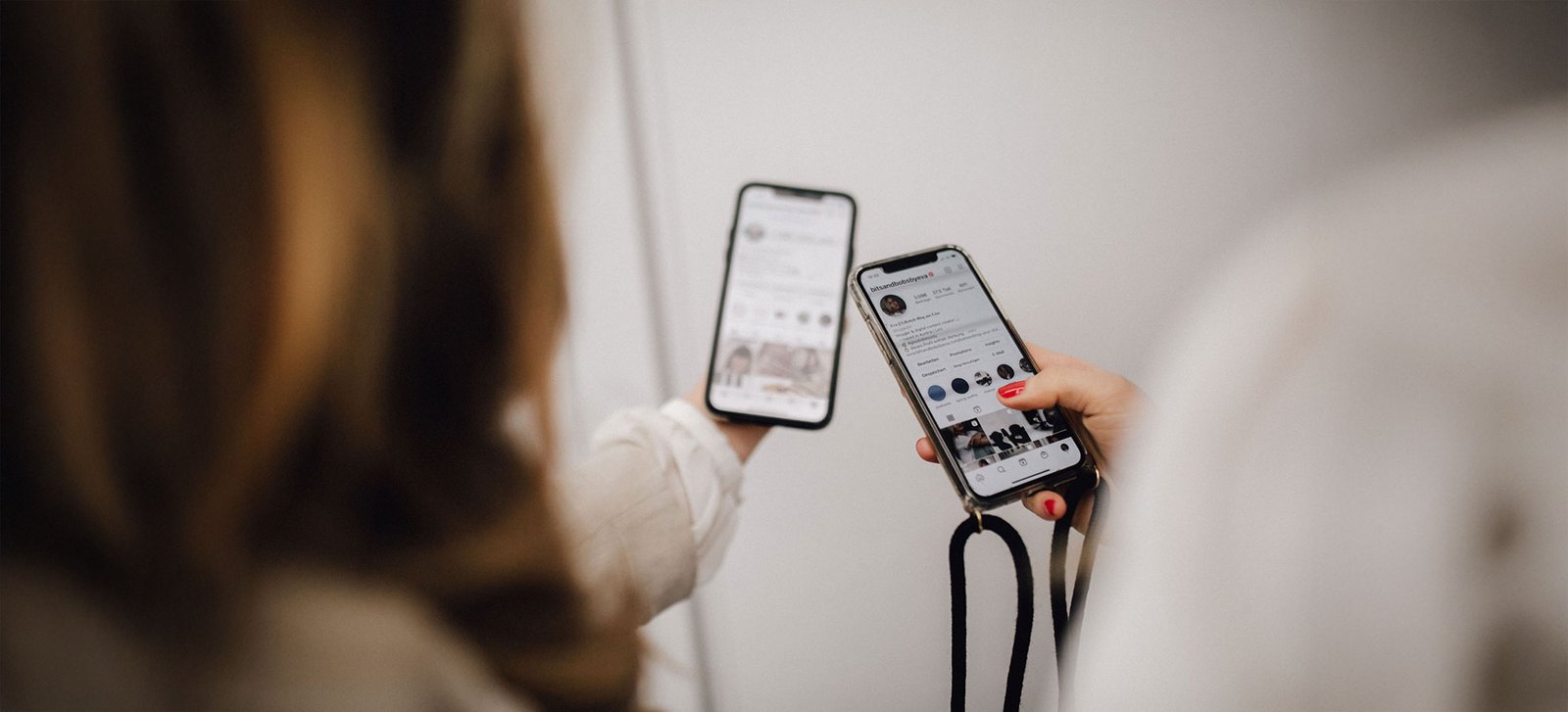Why Your Phone Is the Best Travel Buddy
A smartphone is always with you, lightweight, discreet, and ready to use at any moment – that’s exactly why it has become the most important tool for documenting travels today. The cameras of modern smartphones, especially models like the new iPhone 16 Pro Max, deliver a quality that can rival some DSLR cameras – all without the burden of heavy gear. With just a few simple tricks, you can take your smartphone photos to the next level.
Top 10 Travel Photography Hacks with Your Phone
1. A Clean Lens for Crystal-Clear Photos
It may sound trivial – but it’s the most common reason for blurry photos. A smudged lens from sunscreen, your pocket, or fingerprints can make even the best smartphone powerless. The solution: regularly clean it with a microfiber cloth or a lens-cleaning wipe – and that applies to both the front and rear cameras alike.
2. Keep a Steady Hand – or Use a Tripod
Avoid camera shake by holding your phone with both hands and keeping your elbows close to your body. For long exposures or night shots, a small travel tripod is worth its weight in gold – for example, a flexible GorillaPod. Bonus tip: use the self-timer or a remote shutter release to keep your phone steady during longer exposure times.
3. Plan Enough Storage
Nothing is more frustrating than running out of storage right in the middle of a sunset. Plan ahead – delete unnecessary apps, enable cloud backups, or use an external storage solution.
4. Double-Check Your Camera Settings (Especially on the iPhone 16)
Use the full power of your device: On the iPhone 16 Pro Max, for example, you can enable ProRAW mode, 48 MP resolution, macro mode, or 4K video formats. Experiment with exposure time, depth of field, and new features like Smart HDR 6 to achieve more dynamic results in both bright and dark areas.
Bonus Tip: Most smartphones come with a built-in flash – but it often produces flat, unnatural images. Instead, use manual exposure time (available in third-party apps or Pro modes) and a tripod for more creative results.
5. RAW vs. HEIF: When Should You Use Which?
The RAW mode stores all image information – perfect for later editing with apps like Lightroom Mobile, VSCO, or even your phone’s built-in photo app, especially for landscapes, architecture, or night shots. For snapshots, stories, and family photos, the more efficient HEIF/JPEG format is usually enough.
6. Smart Ways to Use Portrait, Wide, and Telephoto Lenses
- Portrait Mode = Ideal for people or pets, creating beautiful background blur.
- Wide-Angle = Great for landscapes or interiors.
- Telephoto = Perfect for capturing details from a distance – but be careful with “pinch-to-zoom” (digital zoom)! It significantly reduces image quality. Instead, use the optical zoom levels or, if possible, move closer to your subject.
7. Composition: Rule of Thirds & Golden Ratio
Great photos don’t just come from technology – composition plays an even bigger role, meaning how subjects are placed within the frame. Activate the grid (guidelines) in your camera settings – this way you can use the rule of thirds to position horizons, faces, or dominant objects harmoniously in your photo. The golden ratio – a classic design principle from art – also creates images with more balance and tension. Many smartphones even display these lines automatically while you shoot.
The Rule of Thirds – Simple and Effective
Imagine your photo divided into nine equal rectangles by two horizontal and two vertical lines – just like a tic-tac-toe grid. You can activate these gridlines in your smartphone’s camera settings.
The trick: place important elements along these lines or at their intersections – for example, the horizon on the lower third line or a face at one of the crossing points. Why? Because this makes your photo look more balanced, dynamic, and natural than if everything were centered.
The Golden Ratio – The Mathematically Harmonious Option
The Golden Ratio is a classic principle of composition from art and architecture. Instead of dividing the frame into thirds, it uses a ratio of about 1:1.618 – slightly shifted compared to the rule of thirds. This proportion appears especially harmonious to the human eye and has been considered the “perfect proportion” since antiquity.
In practice: No need to measure! If you place key subjects slightly off-center – for example, shifting the main subject a bit to the left or right instead of centering it – you’ll naturally create the effect of the Golden Ratio.
Extra Tip for Landscapes: Always shoot in landscape mode – it creates more harmonious compositions, especially for wide-angle or panoramic shots.
8. Mastering Light for Better Photos
The best camera is useless without good light. Shoot early in the morning or during the “golden hour” (shortly after sunrise or just before sunset) for warm, soft tones. Avoid the harsh midday sun, which creates strong shadows. Photography is “painting with light” – so always keep it in mind.
- Make sure faces are turned toward the light source – otherwise they can look shadowy and lose detail.
- When the sun is strong, step into the shade – it gives you softer, more flattering light.
- Shooting indoors? A compact selfie ring light instantly gives you brighter, more flattering portraits.
Shooting against the light? Skip the flash and use your iPhone’s exposure adjustment or HDR mode for more balanced results.
9. Master Focus & Exposure Settings
Many smartphones allow you to manually set the focus and adjust the exposure:
- Tap on the subject you want to keep in focus – ideally the face when photographing people. The brightness will then automatically adjust.
- For example: Tap on a bright sky and the image will get darker. Tap on a shaded subject and the image will become brighter.
Many smartphones also let you adjust the depth of field – ideal for creative portraits with beautiful bokeh.
10. Unlock Creative Modes: Panorama & Long Exposure
- Panorama Mode: Perfect for wide landscapes, large buildings, or even vertical shots (like towers or palm trees). When used vertically, it can capture truly impressive perspectives.
- Long Exposure:
- iPhones with Live Photos can be converted into a long exposure afterward – perfect for waterfalls, traffic, or moving clouds.
- Alternatively, with an external app and an ND filter, you can also take long exposures during the day – as long as you use a tripod and set the exposure time to 1–2 seconds.

My New iPhone 16 Pro Max – Used, but Like New
I’ve just treated myself to the new iPhone 16 Pro Max – a real powerhouse when it comes to cameras. Since sustainability is important to me (and the brand-new price… 😅), I bought it through Back Market – refurbished, tested, affordable, and with a minimum 12-month warranty.
Back Market doesn’t just offer refurbished smartphones, but also:
Back Market bietet nicht nur gebrauchte Handys, sondern auch:
- Laptops & Tablets
- Cameras & Accessories
- AirPods, smartwatches, home appliances, and much more.
The platform only works with certified sellers, helps reduce e-waste, and conserves resources – ideal for anyone who wants to consume smarter.
Tip: With my link, you can go directly to Back Market Austria and Germany.
Conclusion
Your smartphone is not only your navigator, guide, and travel diary – it’s also your best camera on the road. With a bit of know-how and the right preparation, you can capture photos that will remain unforgettable, not just for Instagram, but also for your personal photo album.
Julia & Clemens from traveldisco.shop
Feel free to follow us on Instagram and Youtube for more travel tips, inspiration, and to learn more about our products at traveldisco.shop If you have any comments, feedback, or questions, feel free to send us a DM there or use our contact form.
As part of our commitment as bloggers, we aim to communicate openly and transparently with our readers. In our posts, we recommend products and services that we believe in, based on our own experience. Some links may be affiliate links, leading you to products and services that we fully endorse. If you book or purchase through these links, we receive a small commission as a token of appreciation. You incur no additional costs.
In addition to affiliate links, we may also receive compensation in the form of product samples, invitations, or financial compensation. This can also include sponsored partnerships, advertising placements on our homepage, or paid collaborations. These partnerships and collaborations can generate additional income and support us in operating our website and providing high-quality content for our readers.
It’s important to note that our opinions remain independent, and we stand by only recommending high-quality content.





Add comment
You must be logged in to post a comment.